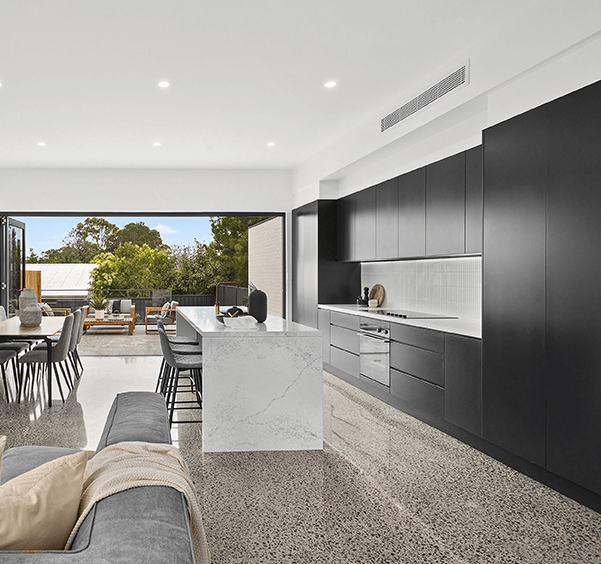Coloured concrete floors are a great option for beautiful floors. With staining, you can achieve a lovely richness in the finish of polished concrete floors. Paint produces a rather solid and opaque effect while stains infuse the concrete with beautiful translucent tones depending on the techniques used and the existing surface. A stain can help achieve a variety of beautiful finishes including the appearance of stained wood, stone and even polished marble.
Concrete stains come in water based acrylic and acid based chemical varieties. Acid stains are a combination of acid soluble metallic salts, hydrochloric acid and water. These stains penetrate the concrete surface and react with the calcium hydroxide within. The acid creates light etches on the surface which are penetrated by the metallic salts. Acid stains will not peel away, chip or fade as they become a permanent part of the concrete. However, the colour palette for acid-etch stains are limited to earth tones such as soft blues and greens, terra cotta shades, browns and tans.
If you need a colour beyond earth shades, water-based stains are your best option. These come in a wide array of colours. Shades such as white, black and metallic hues are the most popular among different manufacturers. These colours also penetrate the concrete to produce permanent hues that can be opaque, translucent or anything in between as per your requirement and the product used.
Coloured concrete floors can be created with both of these types of stains. The condition of the floor and whether the concrete had been previously coloured does not make a difference in the final result. These colouring techniques are ideal for revamping dull and old concrete surfaces. Due to their penetrating nature, these colouring techniques result in wear resistant colour, UV stability and can be used on exterior or interior concrete. Coloured concrete with these methods are a great choice for floors in just about any part of a home, kitchen countertops and even patios and walkways.
However, it must be noted that stains will not hide any permanent flaws in the existing concrete surface. For instance, blemishes, cracks and other formations will still be visible in the concrete. If a floor has major cracks or spalling, then staining is not the best choice as the repair work will be visible through the stain. Floors and other surfaces also need to be completely free from dirt, grime, grease, adhesives, coatings as well as sealers and curing membranes before staining.

